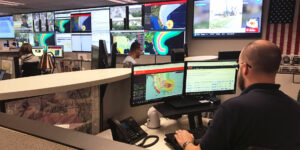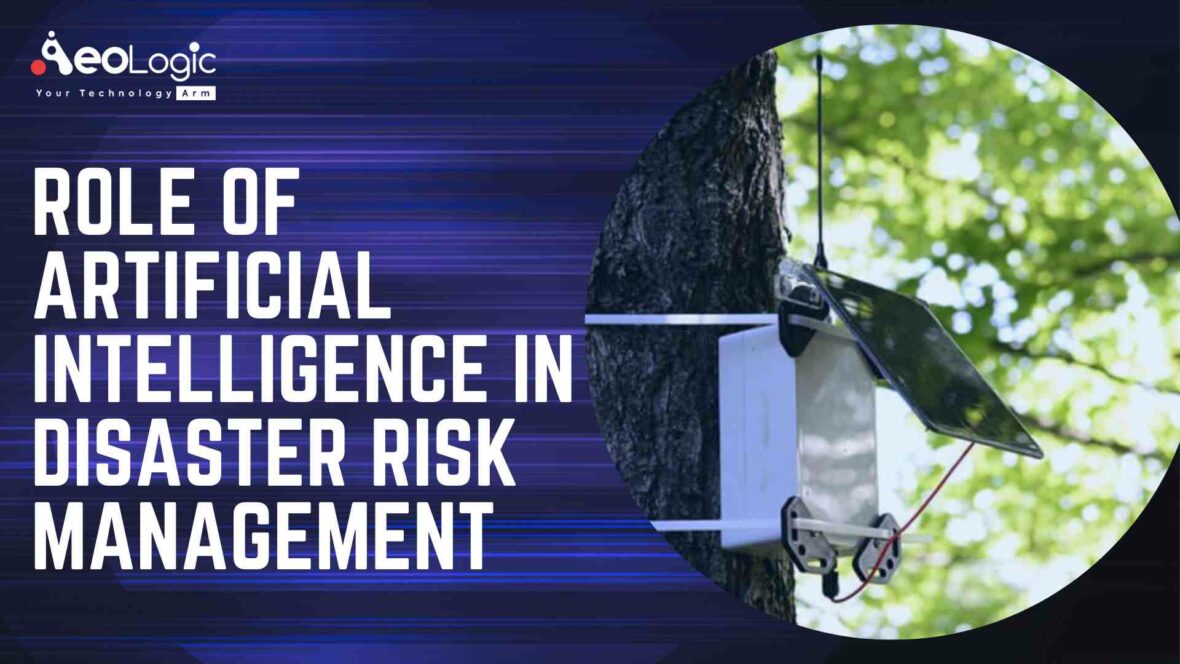The role of AI in disaster risk management should be every country’s top priority. Since disasters can take many different forms. From natural disasters like wildfires and hurricanes to pandemics and terrorist attacks, the citizens must be ready. The impact of a disaster can be devastating, equally for the people affected and for the economy.
The role of artificial intelligence in In disaster risk management and reduction particularly machine learning (ML), plays a crucial role. Ranging from forecasting extreme events to developing risk mitigation strategies. And offering real-time situational awareness and decision support.
In order to minimize the damage caused by disasters, it is important to understand the role of AI in disaster risk management strategy. Certainly, many experts are believing that artificial intelligence (AI) can play a role in improving risk management and disaster response.
This blog post will be exploring how AI can help during a disaster.
Artificial Intelligence and Machine Learning for Disaster Risk Management
First, let’s look at how AI and machine learning (ML) will be helping when disaster strikes. Artificial intelligence is using algorithms to learn from data. Machine learning is a type of AI that is allowing computer systems to improve from experience without being programmed to do so.
Also read: Remote Sensing Role in Emergency Mapping for Disaster Response
In the background of disaster response, first responders can use AI and ML for a variety of operations, such as:
Automated damage assessment
One of the first and major steps in any disaster response is damage assessment. This includes sending out teams of assessors for evaluating the extent of the damage. Automated damage assessment using AI and ML will be helping to speed up this process.
For instance, we can use computer vision algorithms for analyzing images and videos to identify damaged buildings. This information can then be incorporated for creating maps that show the affected areas. Additionally, firms can utilize AI for processing large amounts of data from different sources (e.g., social media, satellite images). This will be providing a complete picture of the damage caused by a disaster.
Predictive analytics for evacuation
Another way that AI can facilitate during a disaster is by using predictive analytics to predict when and where an evacuation might be required. We can take the help of predictive analytics to analyze data from seismic sensors, weather data, and satellite images. Experts can then use this data for creating a model that predicts how an eruption might unfold. Furthermore, understanding if it will be violent enough to warrant an evacuation and when it might happen to enable authorities to prepare for the disaster efficiently.

Routing of emergency resources
However, during a disaster, time is of the essence. Therefore, we can accelerate many of the tasks that require to be carried out during a disaster response. This can aid to save lives and mitigate damage. Also, transfer learning can be creating models that can analyze satellite images and identify areas of damage. Relevant authorities can then integrate this information to deploy emergency services more efficiently.
Intelligent search algorithms are taken into consideration to find the best route for evacuations. The role of AI in disaster risk management is to route emergency resources. Therefore, ensuring that they are deployed more efficiently and effectively. Furthermore, we can use AI-based solutions to predict the path of a natural disaster.
Prevention
Nonetheless, the role of AI in disaster risk management is not just about response and recovery. However, it is also about prevention. Artificial intelligence can identify risk factors that are leading to a disaster. For instance, it can take machine learning to analyze historical data to identify patterns that may project a forthcoming catastrophe.
Also read: The Role of Technology in Disaster Management
Conclusion: AI and Disaster Response and Risk Management
Disaster risk management is a complicated and multi-faceted problem. AI and machine learning can help in improving disaster response in several ways. Ranging from automated damage assessment to predictive analytics for evacuation. Thereby, AI is making a significant difference when it comes to reducing the impact of a disaster.
Contact us for elevating your business!
FAQs
What is the role of artificial intelligence in disaster management?
Artificial intelligence (AI), especially machine learning (ML), is playing an increasingly important role in disaster risk reduction (DRR). Ranging from projecting extreme events and developing hazard maps to the detection of events in real-time. Furthermore, the provision of situational awareness and decision support
How AI could help in preventing disasters?
From forecasting to optimizing relief resources to knowing hazards, AI can help in detection. And it can also help in preparing for extreme weather and other hazards.






